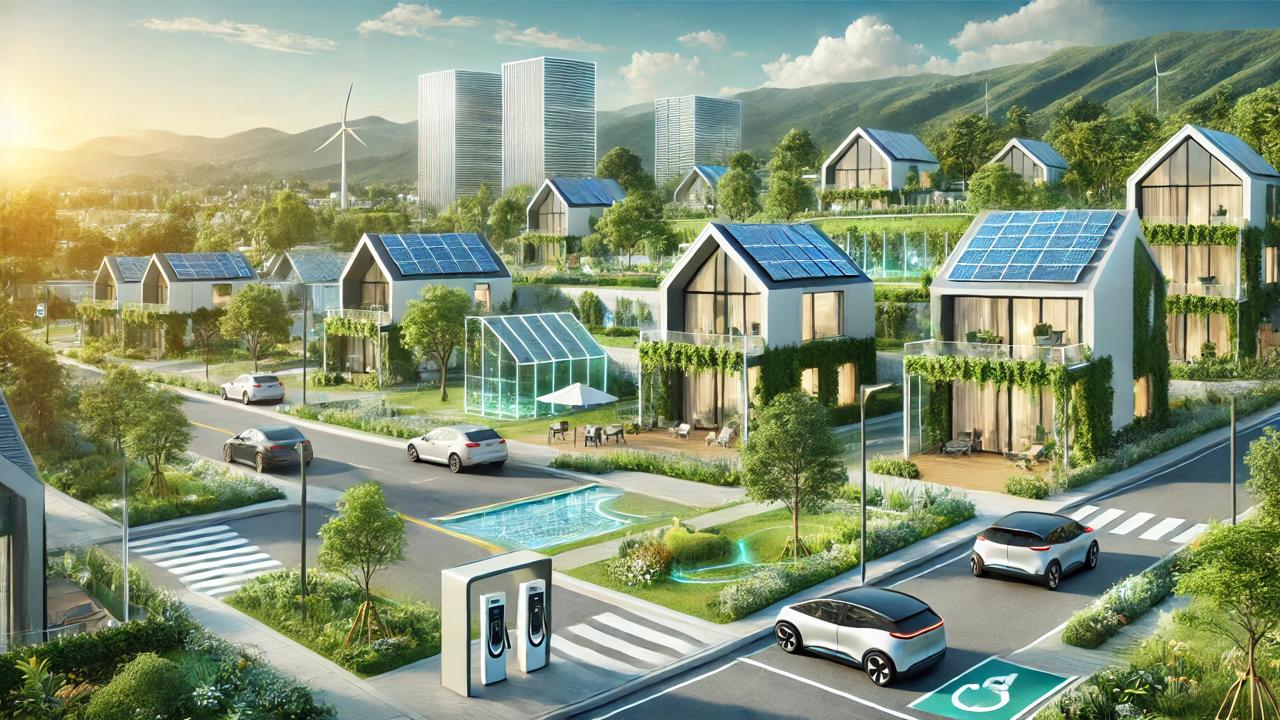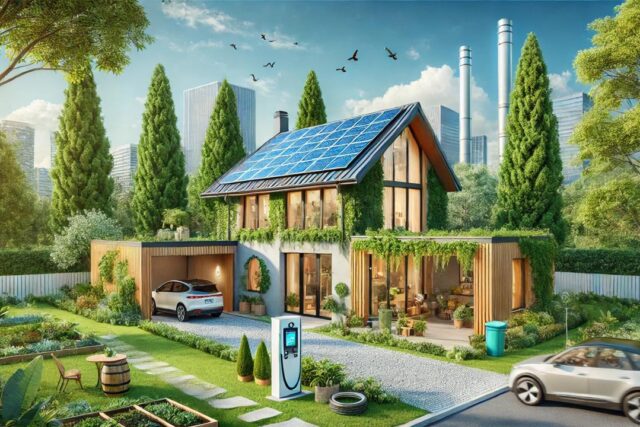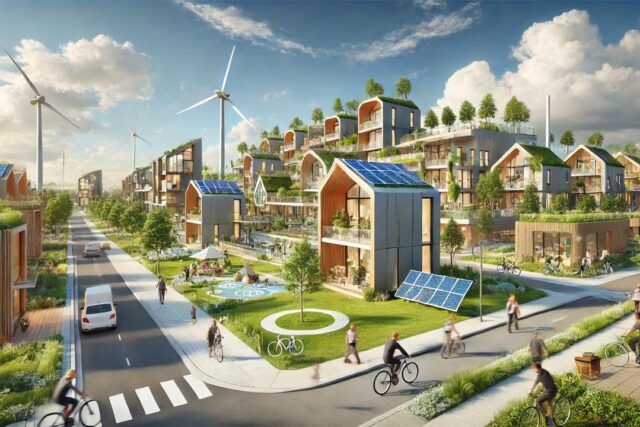
The world is shifting toward eco-conscious living, and sustainable home designs are leading the way in residential construction. Homeowners and builders are embracing energy-efficient, environmentally friendly housing solutions that reduce carbon footprints while offering style and comfort.
In this article, we will explain Sustainable Home Designs to Watch in 2025. Innovative trends in home design are emerging to redefine the future of sustainable living.
The Rise of Eco-Friendly Architecture
Sustainable home designs are no longer a niche concept but a mainstream priority. As climate change concerns grow, architects and developers are focusing on homes that optimize energy use, minimize waste, and integrate renewable materials. These homes are designed to maximize efficiency without compromising aesthetics or functionality.
Innovative Green Home Designs Trending in 2025
With technological advancements and increased awareness of environmental issues, innovative green home designs trending in 2025 are setting new standards in sustainable architecture.
Passive House Design
Passive house design emphasizes superior insulation, airtight construction, and strategic window placement to minimize energy consumption. These homes maintain stable indoor temperatures, reducing the need for artificial heating and cooling. Advanced ventilation systems ensure fresh air circulation, enhancing indoor air quality.
Modular and Prefabricated Homes
Modular homes are revolutionizing the construction industry by offering customizable, energy-efficient solutions. These homes are built in factory-controlled environments, reducing material waste and construction time. Prefabricated elements allow for greater precision in design and improved sustainability.
Biophilic Architecture
Biophilic design integrates nature into home construction, creating spaces that promote well-being. Large windows, indoor gardens, and natural building materials connect occupants with the outdoors, fostering a healthier living environment. These designs also improve ventilation and enhance natural lighting.
Top Energy-Efficient Home Layouts Gaining Popularity
Efficiency is at the core of modern home design. The top energy-efficient home layouts gaining popularity prioritize reduced energy consumption through smart design elements and technology integration.
Open Floor Plans with Natural Light Optimization
Open layouts enhance airflow and natural light distribution, reducing the need for artificial lighting and cooling systems. Homes designed with expansive windows, skylights, and strategically placed mirrors maximize sunlight exposure, decreasing electricity usage.
Smart Home Integration
Smart home technology plays a crucial role in optimizing energy consumption. Automated lighting, temperature control, and energy-monitoring systems help homeowners track and reduce energy usage. AI-powered systems adapt to lifestyle patterns, ensuring efficient operation without human intervention.
Net-Zero Homes
Net-zero homes generate as much energy as they consume through solar panels, wind turbines, and energy storage solutions. These self-sufficient homes are becoming more accessible due to advancements in renewable energy technology. Governments and private sectors are also offering incentives for homeowners investing in net-zero properties.
Sustainable Materials in Home Construction
Eco-friendly building materials contribute significantly to sustainable home designs. Recycled, reclaimed, and low-impact materials reduce environmental harm while offering durability and aesthetic appeal.
Reclaimed Wood
Reclaimed wood is widely used for flooring, furniture, and structural components. It adds character to homes while reducing the demand for newly sourced timber. This practice helps preserve forests and minimizes waste.
Recycled Steel and Concrete
Recycled steel and concrete are gaining popularity in sustainable construction. These materials reduce carbon emissions associated with new material production. They also offer high durability and strength, ensuring long-lasting structures.
Sustainable Insulation Materials
Eco-friendly insulation options, such as sheep wool, hempcrete, and cellulose, provide excellent thermal efficiency while reducing reliance on synthetic materials. These natural insulators enhance energy conservation and improve indoor comfort.
Water Conservation Strategies in Home Design
Sustainable home designs emphasize water conservation to address growing concerns about water scarcity. Smart water management systems and innovative landscaping solutions help homeowners reduce consumption.
Rainwater Harvesting Systems
Rainwater harvesting systems collect and store rainwater for irrigation, plumbing, and other household uses. This reduces reliance on municipal water supplies and promotes self-sufficiency.
Greywater Recycling
Greywater recycling systems treat and reuse wastewater from sinks, showers, and washing machines for landscaping and toilet flushing. Implementing these systems significantly reduces household water wastage.
Xeriscaping and Drought-Resistant Landscaping
Xeriscaping utilizes native, drought-resistant plants that require minimal watering. This landscaping approach conserves water while enhancing outdoor aesthetics. Gravel, mulch, and permeable surfaces further support sustainable yard designs.
Future Trends in Sustainable Home Designs
The future of sustainable home designs will incorporate even more advanced technologies and innovative practices. As environmental regulations tighten, homes will need to meet higher efficiency standards while maintaining affordability.
3D-Printed Homes
3D-printed homes are emerging as a revolutionary solution to sustainable construction. These homes use eco-friendly materials and significantly reduce construction waste. The speed and cost-effectiveness of 3D printing make sustainable housing more accessible.
Carbon-Negative Buildings
Carbon-negative homes go beyond net-zero by actively removing carbon dioxide from the atmosphere. These buildings incorporate carbon-absorbing materials and sustainable energy practices to offset emissions, contributing to climate change mitigation.
Off-Grid Living
Off-grid homes, powered by renewable energy sources and self-sufficient water and waste management systems, are gaining appeal. These homes provide complete independence from traditional utilities while reducing environmental impact.
Conclusion
Sustainable home designs are shaping the future of residential architecture by prioritizing energy efficiency, eco-friendly materials, and smart technologies. As sustainable home designs evolve, innovative solutions such as passive house principles, net-zero layouts, and smart home integration are becoming mainstream. By embracing these trends, homeowners can reduce their carbon footprint while enjoying comfortable, modern living spaces. With 2025 approaching, the demand for green homes continues to rise, setting a new standard for the housing industry






Leave a Reply
You must be logged in to post a comment.